Environmental Encyclopedia
Подождите немного. Документ загружается.


Environmental Encyclopedia 3
Grazing on public lands
Livestock grazed on open land called the range. When
livestock ate all the forage in one area, the rancher moved
the herd and headquarters to another area. By 1870, there
were 4.1 million beef cattle and 4.8 million sheep in 17
states, according to BLM. Thirty years later, there were 19.6
million cattle and 25.1 million sheep. As the number of
livestock increased, the range became crowded and there
was less forage.
The twentieth century opened with discussion in Con-
gress about how to regulate use of public lands. After years
of debate, Congress approved the
Taylor Grazing Act
in
1934. The act established a permit requirement and “signifi-
cantly reduced” the number of ranchers and livestock, ac-
cording to BLM. A portion of fees was allocated to the
grazing district for improvements like fencing.
The act only addressed grazing as a
land use
. That
policy changed with the approval of the 1976
Federal Land
Policy and Management Act
. FLPMA stated that federal
public lands and their resources would be managed for multi-
ple uses that “best meet the present and future needs for the
American people.”
Passage of the act reflected concerns about environ-
mental protection and
conservation
. At the same time, the
increase in population brought more demand for recreational
uses of public land. In the years since the passage of FLPMA
and environmental protection laws, the land-use debate in-
tensified.
Federal public lands include the 264 million acres
managed by BLM in 12 western states and the 191 million
acres of United States
Forest Service
land in 44 states.
Federal grazing permits were issued by those jurisdictions,
the
National Park Service
, and the
Fish and Wildlife Ser-
vice
. BLM manages about half of the 270 million acres
where grazing is allowed. Ranchers pay a fee called an animal
unit month (AUM). This is based on the monthly amount
of forage needed to sustain one cow and her calf, one horse,
or five sheep or goats. The AUM in 2002 was $1.43. Oppo-
nents called the fee a government subsidy. They estimated
an AUM of $11 for grazing on private land.
BLM records for fiscal year 2001 showed 15,643 oper-
ators (ranchers) of cattle, yearling, and buffalo; 1,232 opera-
tors of horses and burros; and 1,225 operators of sheep
and goats. Those figure were not a total count since some
operators may have raised more than one type of livestock.
The BLM figures were from the administrative jurisdiction
of Arizona, California, Colorado, Idaho, Montana, Nevada,
New Mexico, Oregon, Utah, and Wyoming. California
BLM administers some land in Nevada, and Montana ad-
ministers all public land in North and South Dakota.
Within those states, active AUMs totaled 11.3 million
as of November 29, 2001, according to BLM. Livestock
cause more damage to public land than the chainsaw or
657
the bulldozer, according to anti-grazing activists. Damage
includes trampled vegetation,
soil
damage,
water pollution
,
and the spread of invasive weeds, according to grazing oppo-
nents.
The beef and sheep industries are represented by the
Public Lands Council
(PLC), an organization that said graz-
ing helped to preserve open space. PLC said that opponents
incorrectly blamed ranchers for
environmental degrada-
tion
. According to PLC, research indicated that conserva-
tion goals on public land were easier to achieve when grazing
was properly managed. Livestock managers could make im-
provements that would not be done if grazing was prohibited.
Grazing opponents disagreed and used various meth-
ods to limit grazing. Lawsuits claimed that grazing violated
environmental regulations. Successful cases include the 1998
removal of livestock from the Gila River Basin in Arizona
and New Mexico. The ruling was based on the
Endangered
Species Act
and the protection of the spotted owl and other
species
.
Furthermore, activists tried to buy leases. They urged
ranchers to end leases by retiring their permits. Another
solution was proposed in 2002 by the National Public Lands
Grazing Campaign. An umbrella group of various organiza-
tions, NPLGC wanted federal law changed to allow the
voluntary retirement of grazing permits. The federal govern-
ment would pay $175 per AUM to buy out leases. NPLGC
said the plan would cost an average of $13.45 per acre.
The livestock industry rejected the plan. PLC said in
April of 2002 that the plan could cost taxpayers more than
$3.2 billion. Plan supporters countered that grazing “sub-
sidies” cost taxpayers up to $460 million annually. The fed-
eral government had not taken action on the proposal as of
May of 2002.
[Liz Swain]
R
ESOURCES
B
OOKS
Holechek, Jerry, Rex Pieper, and Carlton Herbel. Range Management:
Principles and Practices. Upper Saddle River, NJ: Prentice Hall, 1998.
Wuerthner, George, Mollie Matheson, eds. Welfare Ranching: The Subsi-
dized Destruction of the West.Washington, DC: Island Press, 2002.
O
RGANIZATIONS
Public Policy Center, National Cattlemen’s Beef Association (Public Lands
Council)., 1301 Pennsylvania Avenue, NW, Suite 300, Washington, D.C.
20004-1701 (202) 347-0228, Fax: (202) 638-0607, Email:
jcampbell@beef.org, htttp:/hill.beef.org/files/fedlnds.htm
United States Bureau of Land Management., 1849 C Street, Washington,
D.C. 20240 (202) 452-5125, Fax: (202) 452-5124, , http://www.blm.gov
Western Watersheds Project (National Public Lands Grazing Campaign).,
P.O. Box 1770, Hailey, ID 83333 Email: andykerr@andykerr.net, http://
www.publiclandsranching.org
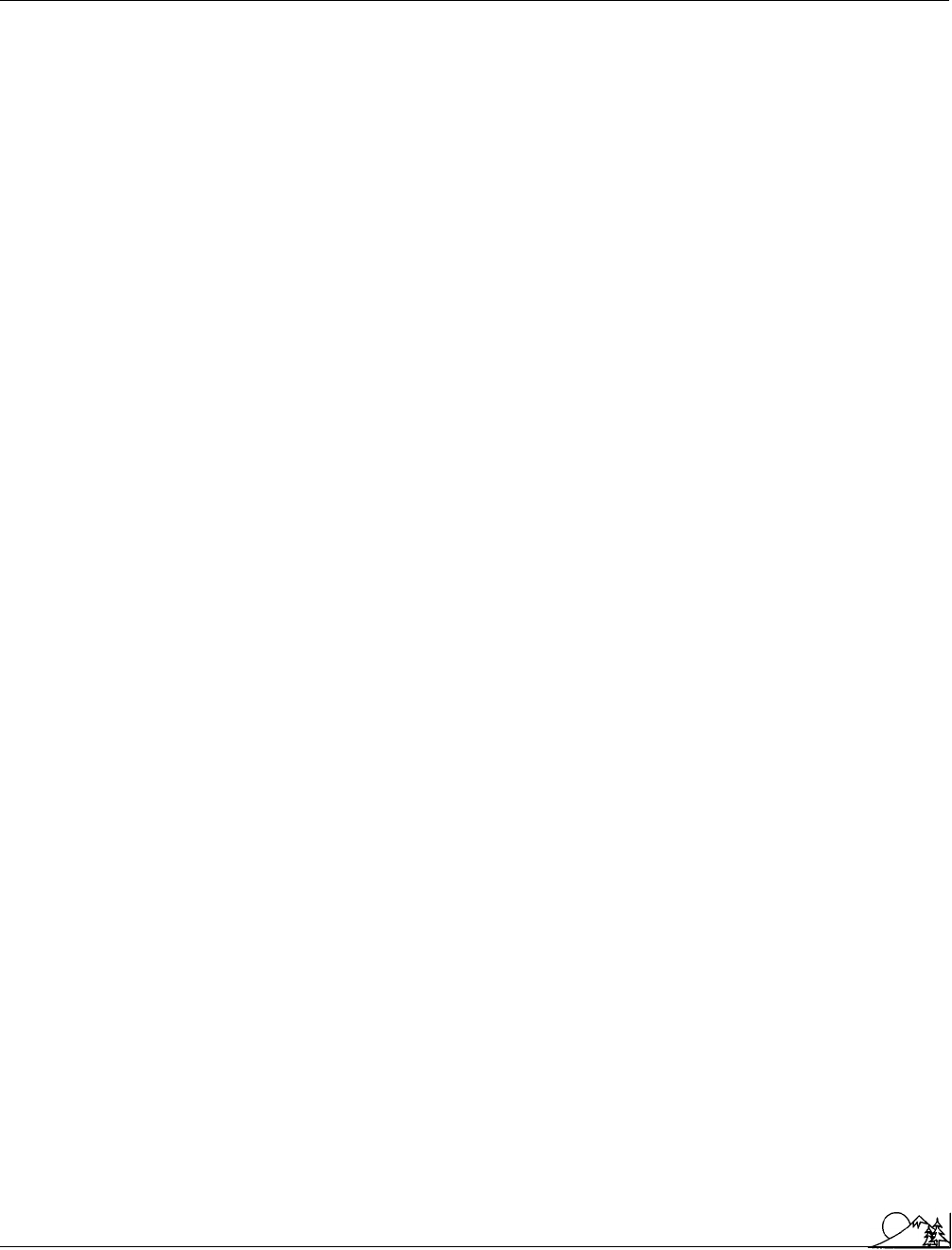
Environmental Encyclopedia 3
Great Barrier Reef
Great Barrier Reef
The Great Barrier Reef, located in the Coral Sea off the
eastern coast of Queensland in northeastern
Australia
, con-
sists of more than 2,800 reefs that range in size from 1
hectare to over 10,000 hectares in area. As the largest reef
in the world, the Great Barrier Reef is 1,250 mi (2,011 km)
in length, extending from a point near McKay, Queensland
in the
south
to the Torres Strait in the north, which lies
between Australia and New Guinea. The Reef is 45 mi (72
km) across at its widest point, with a total area of more than
300,000 square kilometers. Approximately 20% of the reefs
are submerged reefs or shoals, while about 26% are fringing
reefs around continental islands or along the mainland coast.
The remaining reefs are shelf reef platforms. Water depths
range from 65.6–98 ft (20–30 m) in lagoonal areas to 131–
197 ft (40–60 m) between the reefs on the outer shelf.
Starting in the south near the Tropic of Capricorn, the Great
Barrier Reef is a wide scattering of reefs about 186 mi (300
km) out from the coast; moving north the Reef becomes
more continuous and is within 10–12 mi (16–19 km) of the
coast, with a few individual reefs in the inner
lagoon
(the
area between the reef and the coast). North of Cairns the
reef is almost a continuous barrier between the coast and
the Coral Sea. Drilling has indicated that in places the reef
is over 1,640.5 ft (500 m) thick.
At the end of the last
ice age
, about 20,000 years
ago, the sea level was about 394 ft (120 m) lower than it is
today, and dry land extended from the present day coast to
the location of today’s outer Barrier Reef. As the ice melted,
the sea rose, and by 13,000 years ago the coastal plain had
become a submerged continental shelf. Corals and reefs grow
best where there is water movement, so the reefs tended to
form on submerged hills in the
flooding
coastal plain. By
6000 to 7000 years ago, the sea had reached its present level,
and the reef began to assume its present shape. The Spanish
mariner Luis Vaa
´
ez de Torres was the first European known
to have sailed the northern reef, but the Spanish kept the
route a secret to protect their route between Europe and the
Orient. The Reef was explored and charted by Captain James
Cook, whose ship in 1770 ran aground on the reef that now
is called the Endeavor, after the name of his ship.
The Great Barrier Reef provides homes and shelter
for a wide diversity of life. The Great Barrier Reef is home
to corals, which form the reefs,
dolphins
and
whales
, six
species
of
sea turtles
, more than 1,500 species of fish,
4,000 types of mollusks, 500 species of seaweed, and more
than 200 species of birds. The corals that make up the Reef
consist of individual living coral polyps, which as they divide
in a process called budding, form colonies in fan, antler,
brain, and plate shapes. Each polyp, which is a tiny jelly-
like, sack-like animal with a mouth surrounded by tentacles,
lives inside a shell of aragonite, a type of calcium carbonate
658
that is the hard shell typically recognized as coral. The polyps
are joined together to form a colony. Coral polyps obtain
food by catching
plankton
in their tentacles as well as
deriving nutrients from symbiotic algae, the zooxanthellae,
that live within their tissues. These zooxanthellae produce
nutrients through
photosynthesis
, which are then available
for use by the coral. Association with the algae allow corals
to build skeletons three times faster in the light than in the
dark, and faster than storms and waves can break it down.
Coral bleaching
occurs when stressed corals expel the zoo-
xanthellae and turn white, or bleached. If the zooxanthellae
do not return to the coral, the coral will die.
Every year about one-third of the 350 species of coral
reproduce sexually during a mass spawning event. Spawning
occurs in most of the inner reefs around November and in
the outer reefs in December. The spawning occurs at night,
up to six days after the full moon. Eggs and sperm are
released into the water, where they combine to form a free-
swimming larval stage.
The Great Barrier Reef is completely within the trop-
ics. The
climate
of the Reef is a typical
monsoon
weather
pattern, which consists of strong south-easterly winds domi-
nating during the dry winter months and weaker variable
winds occurring during the summer wet season. Both air
and sea temperatures exhibit seasonal variations. Mean sea
temperatures in inshore areas exhibit a range of temperatures
of 69.8°F (21°C) in July and August to 86°F (30°C) in January
and February. Temperatures on offshore reefs exhibit less
seasonal difference, varying from 73.4°F (23°C) in winter to
82°F (28°C) in summer.
There are two types of islands along the Great Barrier
Reef. The larger islands, such as those of the Whitsunday
group, are the tops of submerged mountains that at one
time were high points of a range running along the coast.
These islands have vegetation similar to the mainland. Some
of these islands that have fertile soils and are affected by
heavy monsoonal rains are covered with rain forests. Other
islands are isolated low-lying coral cays. Cays are formed
when coral grow to levels that are higher than sea level, even
at low tide. Coral can only survive a few hours out of water.
The dead coral on the cays is worn down and broken off
by waves and storm action. Eventually the coral debris is
ground into sand. Through time the sand stabilizes, seabirds
start to nest, and hardy vegetation begins to grow. Decom-
posing plant materials and bird droppings change the sand
into a more developed
soil
, providing an
environment
for
a wider diversity of plant life. Cays are found more frequently
on inner reefs in the Great Barrier Reef, where waves and
currents are less strong than on reefs further away from the
coastline. However, vegetated cays are not sufficiently stable
to withstand severe weather, such as storms and cyclones.
Comprehensive protection of the Great Barrier Reef
was accomplished in 1975 by the formation of the Great
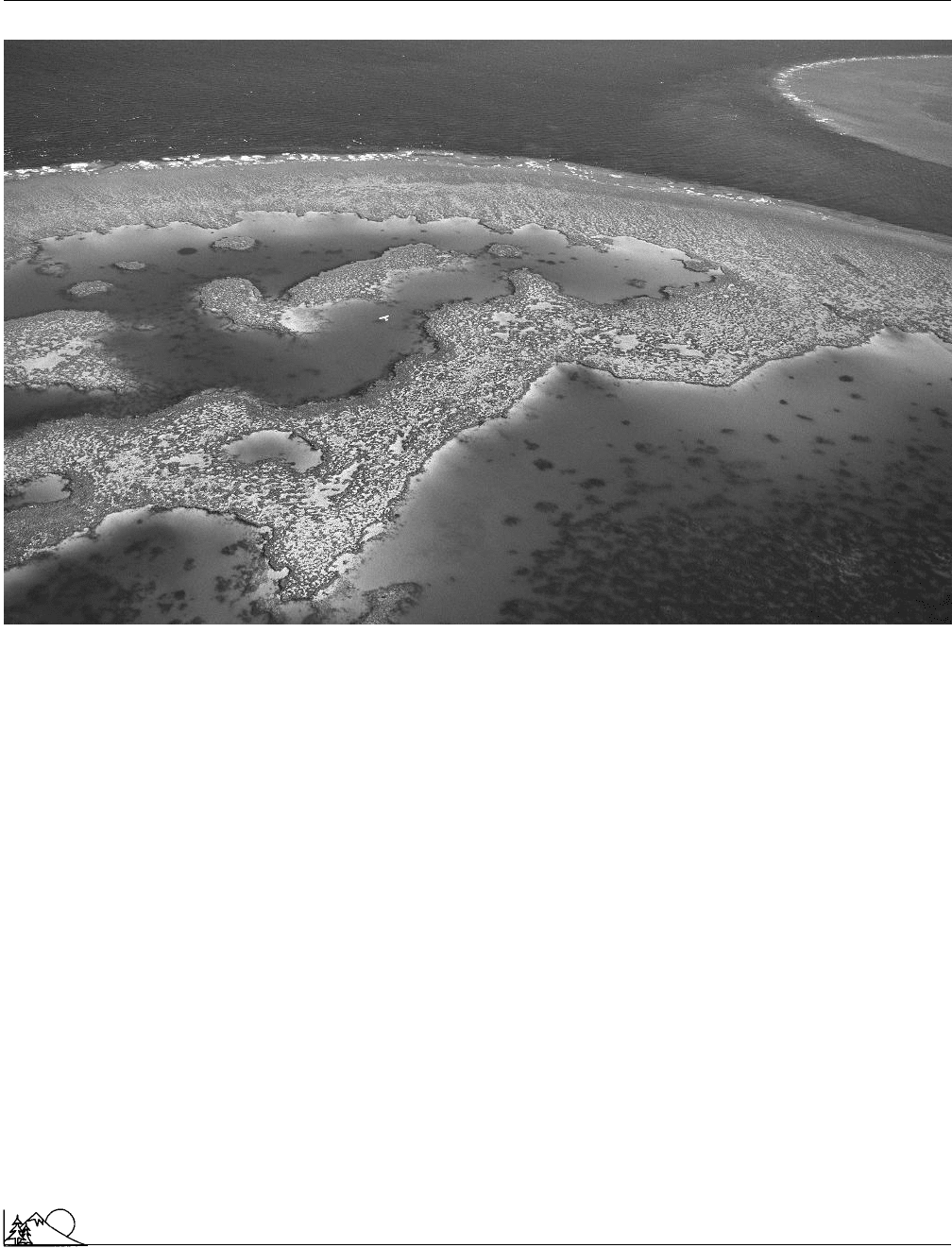
Environmental Encyclopedia 3
Great Barrier Reef
An aerial view of a portion of the Great Barrier Reef. (Photograph by Yann Arthus-Bertrand. Corbis-Bettmann. Reproduced
by permission.)
Barrier Reef Marine Park, administered by the Great Barrier
Reef Marine Park Authority (GBRMPA). Over 98% of the
area, with the exception of a few coastal areas, is now in-
cluded within the Marine Park. Drilling and mining for
minerals within all areas of the Marine Park is forbidden.
In 1981, in recognition of its outstanding natural heritage
value, most of the Great Barrier Reef area was added to
the World Heritage List by the United Nations Education,
Scientific, & Cultural Organization (
UNESCO
). The Great
Barrier Reef World Heritage Area is the largest of the world’s
over 550 World Heritage Areas. In addition to the
coral
reef
area, the Great Barrier Reef World Heritage Area also
contains the continental slope, the inter-reefal areas, and
the Great Barrier Reef lagoon.
The Great Barrier Reef Marine Park has been classi-
fied into 70 bioregions, which are areas of differing marine
biodiversity
with plant and animal communities that, to-
gether with physical features, are significantly different than
the surrounding areas and the rest of the Marine Park. Based
on these bioregions, the GBRMPA has divided the Marine
Park into six zones: (1) the Preservation Zone, which in-
659
cludes areas that are intended to be kept completely un-
touched; (2) the Scientific Research Zone, which includes
areas set aside exclusively for scientific research; (3) the Ma-
rine
National Park
A Zone, which includes areas where
recreational use (i.e., fishing with one line and one hook) is
permitted, but
commercial fishing
is not permitted; (4) the
General Use B Zone, where reasonable recreational and
commercial uses are permitted, but trawling and shipping
are prohibited; and (5) the General Use A Zone, where
all reasonable uses are permitted, including trawling and
shipping, but mining,
oil drilling
, commercial spear fishing
and fishing with scuba equipment are not permitted.
More than two million people a year visit the reef,
generating more than $AU1 billion in tourism dollars. Tour-
ists visit the reef using private charter boats, regular sched-
uled daily cruises, seaplanes, air charter, and helicopter
flights. They view the reefs through reef walks, glass bottom
or semi-submersible boats, snorkeling, or scuba diving.
The Great Barrier Reef is sensitive to climate changes
and to changes in patterns of water movement. In 1998
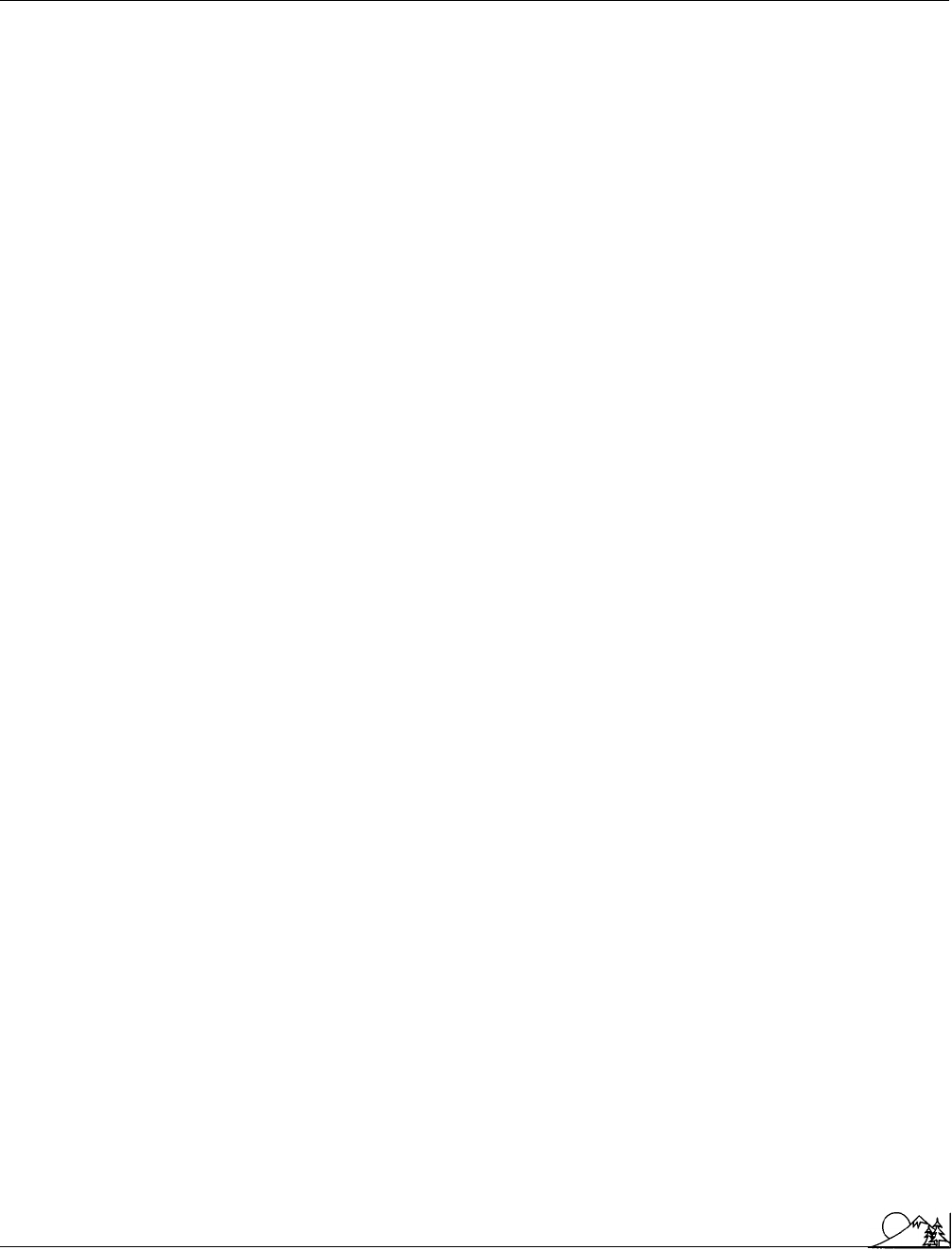
Environmental Encyclopedia 3
Great Lakes
scientists announced that about 60% of the reef had been
affected by coral bleaching due to increasing sea temperatures
and fresh water flooding.
The Reef is also susceptible to physical damage. Hu-
man damage to the Great Barrier Reef has been occurring
due to carelessness, where people walk on the reefs, drop
anchors onto them, drag diving gear over them, break them
into pieces to take as souvenirs, and knock into and ground
boats onto them.
Since the 1960s, during periodic outbreaks, the Crown
of Thorns starfish has been destroying corals that make up
the reef. The Crown of Thorns is a large, thorny, brown-
colored starfish. The starfish eats coral by turning its stomach
out through its mouth, in a process called stomach eversion,
wraps the stomach around a coral, and secretes an
enzyme
to digest the living coral polyps. When the stomach is drawn
back in, all that is left is the limestone coral skeleton. This
skeleton becomes covered with green algae and other types of
encrusting plants and animals, which give the coral skeleton a
dull, gray appearance. Some types of corals become infested
with boring organisms. During periods of rough weather
(e.g., during a
cyclone
), the dead colony and the newly
attached organisms may collapse. Some scientists feel that
outbreaks of the Crown of Thorns starfish may be a natural
part of the lifecycle of the reef. By feeding on fast-growing
species of corals, the starfish may act to preserve coral diver-
sity, for fast-growing populations, if left unchecked, could
dominate the reef.
Water quality
has been identified by the Great Barrier
Reef Marine Park Authority as a critical management issue,
as
pollution
by sediments, toxic metal and organic contami-
nants,
oil spills
, and pesticides, can potentially harm the
Reef. Sewage
discharge
is regulated in the Marine Park
area, with tertiary treatment (i.e.,
nutrient
reduction) re-
quired before marine discharge; alternatively secondary or
tertiary treated
wastewater
can be land applied with mini-
mal marine discharge. However, the primary water quality
concern is nutrient
loading
from inshore ecosystems. Pro-
grams are being developed to reduce nutrient inputs through
regulation of discharges, integrated catchment management,
improved land management practices, and wetland pro-
tection.
[Judith L. Sims]
R
ESOURCES
B
OOKS
Cates, Alison. The Great Barrier Reef: Australia’s Tropical Paradise. Sydney:
New Holland/Struik, 1998.
Doubilet, David. Great Barrier Reef. Washington, DC: National Geo-
graphic Society, 2002.
Lawrence, David, et al. The Great Barrier Reef: Managing an Ecosystem.
Melbourne: Melbourne University Press, 2002.
660
Smith, Fay. Australia’s Great Barrier Reef. Seven Hills, Australia: Cimino
Publishing Group, 1998.
Great Lakes
The advance and retreat of glaciers over millions of years
scraped and scoured the Great Lakes basins until they at-
tained their present form about 10,000 years ago. Forming
the largest system of inland lakes in the world, the Great
Lakes have a surface area of 94,200 mi
2
(244,000 km
2
) and
a volume of more than 28 trillion yd
4
(22,000 km
3
) of water,
20 percent of the world’s surface freshwater.
Lake Superior, with more than 31,660 mi
2
(82,000
km
2
) of water, has the largest surface area of freshwater on
earth. Lake Huron, the world’s fifth largest lake, is at the
same elevation and about the same size as Lake Michigan,
the world’s sixth largest lake. The two are joined by the
narrow, deep Straits of Mackinac. Their accumulated waters
empty into the St. Clair River which flows into the 460 mi
2
(1,190 km
2
) Lake St. Clair. The water continues its flow
into the Detroit River before entering
Lake Erie
, the elev-
enth largest lake in the world. It is the oldest, shallowest,
busiest, and most eutrophic of the Great Lakes. The water-
way continues on into the Niagara River, then to the famous
Niagara Falls, where the water descends a total of 325 ft
(99 m) before it empties into the last Great Lake, Ontario.
The fourteenth largest lake on earth, Lake Ontario is the
smallest in surface area but the second deepest of the Great
Lakes. It discharges into the St. Lawrence River, which
flows into the Atlantic Ocean at the Gulf of St. Lawrence.
The first European explorers discovered a great variety
of native fish. Approximately 153
species
were eventually
identified before human interference disrupted the
ecosys-
tem
, first by
overfishing
, and then by lumbering and indus-
trial development. As many species of fish have disappeared,
about twenty new species have been introduced. Some, such
as the Pacific salmonids, carp, and smelt, were introduced
intentionally. Others, such as the sea lamprey, alewife, and
zebra mussel
, gained access through the Erie and Welland
Canals or by release with the ballast water of vessels trans-
porting other cargo.
Today, lake trout, burbot, and whitefish are the princi-
pal catches of a once extraordinarily rich fisheries enterprise.
Despite the decline in the quality and numbers of suitable
fish, sport and
commercial fishing
are still vital Great Lakes
industries. The sport fishery consists primarily of coho, chi-
nook
salmon
, steelhead trout, walleye, and perch. They now
attract about five million anglers annually with a regional
economic benefit of about $2 billion.
Besides directly water-related activities, presently,
one-fifth of the industry and commerce of the United States
is located in the Great Lakes catchment basin because of

Environmental Encyclopedia 3
Great Lakes Water Quality Agreement (1978)
the availability of abundant cheap and clean freshwater and
accessible, efficient water
transportation
among the lakes
and to the oceans. As a consequence,
pollution
has taken
some obvious as well as more subtle forms. Using the lakes
as a cheap sewage disposal site for shoreline city populations
began in the early seventeenth and eighteenth centuries and
continued until the early 1970s. To improve the quality of
the Great Lakes, the first efforts concentrated on preventing
or removing conventional pollutants such as
phosphates
,
suspended solids, and
nitrogen
.
More deadly toxic contaminants often are not visible
and so initially attracted lessattention. Over the past fifty years
municipal and industrial wastes so polluted the waters, espe-
cially the lower Great Lakes, that, beginning in the middle
1960s organochlorides were identified as serious contami-
nants. Fish were collecting, through
bioaccumulation
, rela-
tively large concentrations of agricultural pesticides such as
DDT and dieldrin as well as the industrial chemical polychlo-
rinated biphenyl (PCB) in their tissues. These were passed
into the human
food chain/web
. By 1980 more than 400
organic and
heavy metals
contaminants had been found in
fish, and fishermen were warned to limit their consumption.
The effects of pollutants are seen primarily at the tops of food
chains and are usually discovered through changes in popula-
tion levels of predator species. Organochlorines and methyl-
ated
mercury
, for example, bioaccumulate to levels that may
cause reproductive failures in fish-eating birds and animals
such as cormorants, eagles, and mink.
Between 1969 and 1972 legislation was enacted in
several states bordering the Great Lakes basin to restrict or
ban the use of dieldrin, DDT, PCBs, mercury and other
toxic
chemicals
. After
point source
discharges were regu-
lated, lake trout and chub, especially in Lake Michigan,
showed dramatic declines in these contaminants. By 1978–
79, however, the fish contaminant declines were only slight;
or the levels remained relatively constant, reflecting airborne
inputs as well as the remobilization of contaminants from
the
sediment
.
This problem is likely to continue because the turnover
rates of the Great Lakes are very slow; and mercury, PCBs
and the pesticides DDT, dieldrin and
chlordane
are very
resistant to degradation in the
environment
. Also, these
compounds continue to enter the Great Lakes ecosystem
from highly diffuse nonpoint sources such as airborne depo-
sition, agricultural and
urban runoff
, remobilization from
the sediments,
leaching
from municipal and industrial land-
fills, municipal and industrial discharges, and illegal dump-
ing. See also Agricultural chemicals; Agricultural pollution;
Great Lakes Water Quality Agreement; Heavy metals and
heavy metal poisoning; Industrial waste treatment; Methyla-
tion; Water pollution
[Frank M. D’Itri]
661
R
ESOURCES
B
OOKS
Ashworth, W. The Late, Great Lakes: An Environmental History. New York:
Knopf, 1986.
Great Lakes, Great Legacy. Washington, DC: Conservation Foundation,
1989.
Hough, J. L. Geology of the Great Lakes. Urbana, IL: University of Illinois
Press, 1958.
Sixth Biennial Report on Great Lakes Water Quality. Windsor, Ont.: Interna-
tional Joint Commission, 1992.
Weller, P. Fresh Water Seas: Saving the Great Lakes, Between the Lines.
Toronto: Publishers, 1990.
Great Lakes Water Quality
Agreement (1978)
The
Great Lakes Water Quality
Agreement of 1978
amended and strengthened the International Great Lakes
Water Quality Agreement between Canada and the United
States, which was signed in 1972. The original agreement es-
tablished a framework for research, clean-up, and
pollution
control
based on goals determined by the two nations. The
existing
International Joint Commission
, in cooperation
with the newly-created International Great Lakes Water
Quality Board, was to oversee the implementation of the
agreement. Chief goals of the agreement were to reduce the
amount of
phosphorus
being dumped into the lakes by 50
percent, to require all municipal
sewage treatment
plants
to be at the secondary level (removing nutrients such as phos-
phorous and
nitrogen
), and to control toxic
water pollution
.
The impetus for action in 1972, and again in 1978,
was the decreasing water quality in the Great Lakes. Two
incidents best symbolized this to the nation. First, the mas-
sive algal blooms in
Lake Erie
, due to eutrophication, led
many commentators to declare that the lake was dead. And
second, when the
Cuyahoga River
in Cleveland caught fire
in 1969, it provided a clear visual message to the rest of the
country about the state of
pollution
in the Great Lakes.
Perhaps not as visible, but just as serious, the Great Lakes
were also suffering from toxic chemical pollution, which was
a problem for water use, and also for sports and recreational
fishing. Limits, and in some cases, bans, were placed on
how much fish from the lakes could be consumed.
The 1978 Agreement substantially strengthened the
1972 accord. The new agreement focused especially on toxic
pollutants and phosphorous, the chief
nutrient
responsible
for eutrophication in the Great Lakes. A stricter definition
of a
toxic substance
was included, as well as specific water
quality objectives for certain
heavy metals
, polychlorinated
biphenyl (PCB), and pesticides, and a list of hundreds of
hazardous and potentially hazardous materials. Phosphorous
entering the lakes would be reduced further in certain lakes,
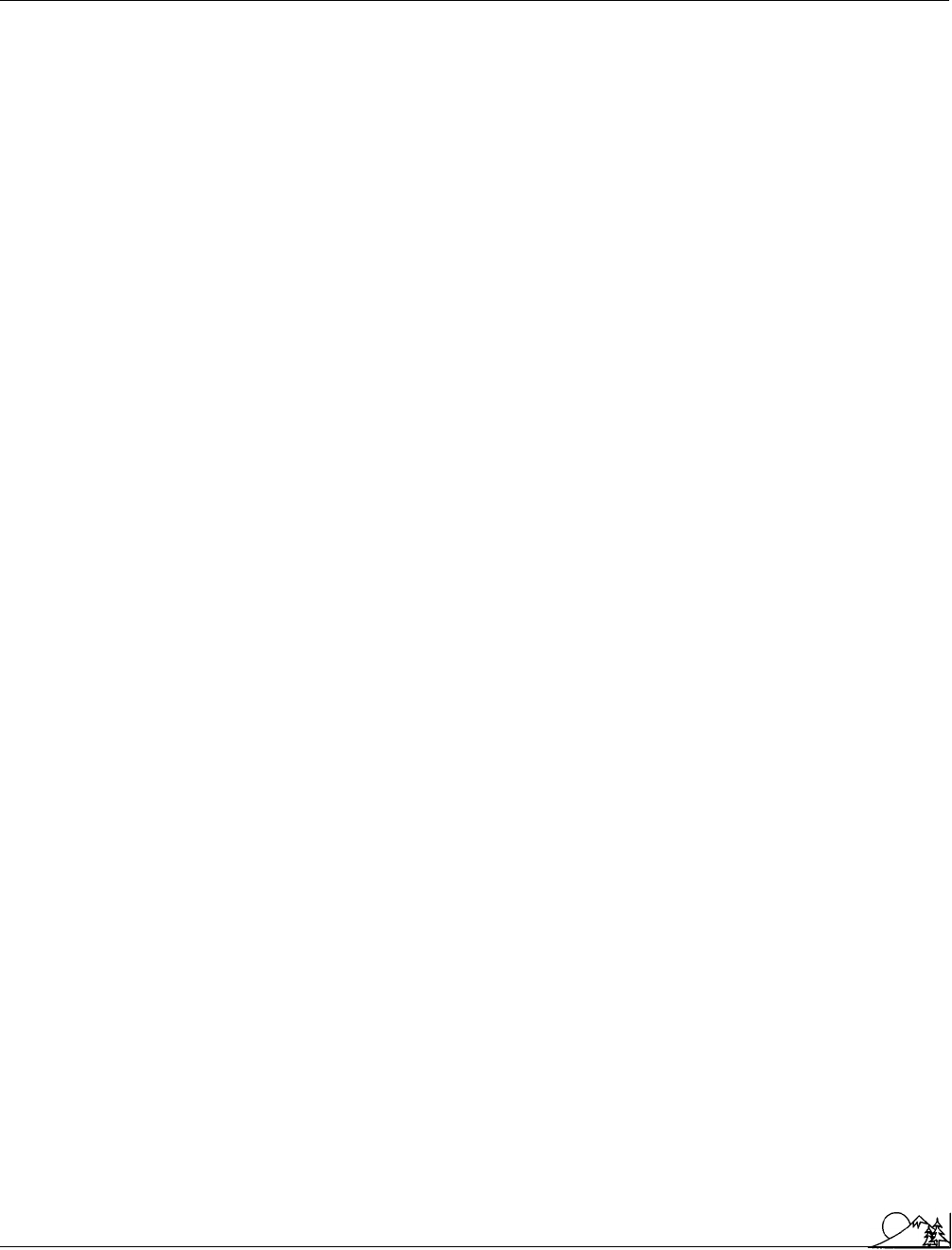
Environmental Encyclopedia 3
Great Smoky Mountains
primarily by improved
municipal solid waste
plants. Addi-
tional sections of the agreement dealt with pollution resulting
from airborne
toxins
,
dredging
, shipping, and
nonpoint
source
pollution. A contingency plan between the two na-
tions to respond to spills or other severe pollution episodes
was also to be created. The Agreement is an Executive
Agreement with no force of law in either Canada or the
United States. Rather, each nation must depend on existing
laws to meet these joint goals.
TheGreat Lakes CriticalPrograms Act, passedin 1990,
was designed to increase the efforts of the
Environmental
Protection Agency
(EPA) and the states in cleaning up the
Great Lakes. Evaluations of the 1978 Agreement indicated
that neither the EPA nor the states had been putting sufficient
effort into the implementation of the necessary programs.
By the middle 1990’s, significant progress had been
made on reducing phosphorous pollution and improving
municipal sewage treatment by building new plants and
improving existing plants. Phosphorous loadings were below
1978 target loads for Superior, Huron, and Michigan, and
at or near target loads for Erie and Ontario. Hence, this
aspect of the water quality agreement has largely been
achieved. There has also been significant improvement on
point source
pollution of toxic
chemicals
such as PCBs.
Toxic substances in the lakes remain a major problem due
to
air pollution
,
runoff
(non-point source pollution), and
releases from already contaminated sediments. For instance,
the source of over 75% of the PCBs entering Lake Superior
and 95% of the lead entering the Great Lakes is air pollution.
In 1995, Canada and the United States agreed to develop
a coordinated binational strategy to virtually eliminate persis-
tent toxic substances from the Great Lakes Basin. That same
year, the EPA launched the Great Lakes Water Quality
Initiative as a framework for achieving that goal. See also
Agricultural runoff; Chemical spills; Heavy metals and heavy
metal poisoning; Oil spills
[Christopher McGory Klyza]
R
ESOURCES
B
OOKS
Ashworth, W. The Late, Great Lakes. New York: Knopf, 1986.
Council on Environmental Quality. Environmental Quality: 21st Annual
Report. Washington DC: U.S. Government Printing Office, 1990.
P
ERIODICALS
“U. S., Canada Reach Pollution Pact.” New York Times, June 1, 1978, B6.
Great Smoky Mountains
The Great Smoky Mountains (GSM)
National Park
covers
approximately 543,400 acres (220,000 ha) of western North
662
Carolina and southeastern Tennessee, making the park the
single largest
wilderness
area in the eastern United States.
The mountains received their name from the Cherokee for
the smoke-like clouds which frequently shroud their peaks
and the grey-green
haze
of the wooded slopes. In early fall,
this grey-green haze becomes a blaze of autumnal colors.
The GSM are known for their large stands of some of the
world’s best remaining examples of temperate
deciduous
forest
, and for their “balds” or treeless mountain tops. The
park’s size, scenic beauty, and geographical proximity to large
population centers are features that contribute to attracting
more visitors annually than any other national park (includ-
ing the somewhat better-known Yellowstone, Yosemite, and
Grand Canyon National Parks).
The GSM are situated in what had been one of the
least accessible areas of the eastern United States. Natural
barriers contributed to relatively low levels of development
and exploitation through the eighteenth and nineteenth cen-
turies. GSM National Park was authorized in 1926. Land
purchase (funded in part by a five million dollar donation
from foundations associated with the Rockefeller family)
began in 1930 and was established through an act of Con-
gress in June of 1934. The Park was formally dedicated by
President Franklin D. Roosevelt in 1940. In 1976, the Park
was recognized as a
biosphere reserve
, and in 1983 the
GSM were selected as a World Heritage Site.
The GSM contain several of the highest mountain
peaks in the United States east of the Mississippi River. The
Park’s Mt. Guyot, Mt. Chapman, and Mt. Leconte all tower
over 6,000 ft (1,830 m). At 6,643 ft (2,025 m), Clingman’s
Dome, on the Tennessee side, is the highest point in the
Park, as well as the crest of the Appalachian Trail. This
peak was named after General Thomas L. Clingman, a
soldier and scientist who, while exploring the area with
Arnold Guyot in the late nineteenth century, was the first
to measure the summit’s elevation.
Among the oldest mountains in the world, the GSM
also contain some of the oldest rock strata in the eastern
United States. Sheetlike layers of slate (a fine-grained rock
originally formed from mud
sediment
) create jagged out-
crops of spectacularly-angled rock, glinting in areas where
mica deposits (a sparkling mineral formed when slate is
heated) show through to the surface. The slate that makes
up much of the jagged central ridge line tells the story of
how the mountains were formed by repeated elevations
rather than by one single geological event. The bedrock
ranges in age from about 600 million–1 billion years and
exhibits a range of different characteristics owing to meta-
morphoses caused by the heat and violence of geological
shifts.
More than 148,200 acres (60,000 ha) of GSM Na-
tional Park are pristine or primitive. Early in the summer,

Environmental Encyclopedia 3
Green advertising and marketing
the characteristic “balds” of the GSM (clear, treeless patches
on the summits) are brightened by rhododendron blooms
around their peripheries. Several varieties of spruce, buckeye,
birch, hemlock, dogwood are also common. The abundant
sunshine and frequent rain of the region help support over
1,500
species
of flowering plants, including eight species
of trillium, 32 species of violets, and 29 species of orchids.
During the last
ice age
, the highlands were a refuge for
northern plant species displaced by the continental ice sheet.
Remnants of some of these species, including red spruce
and Fraser fir, can still be found at the higher elevations but
virtually nowhere else at this latitude. The Park contains the
largest virgin forests of red spruce and balsam fir, and the
finest virgin hardwood forests left in the United States.
Indeed, the slopes of the GSM may support more virgin
timber than the rest of the eastern United States combined.
In the fall, when the green chlorophyll in deciduous leaves
begins to break down, these forests put on a spectacular
show of color. Fall colors generally peak between October
15–25, when up and down the mountains may be seen the
brilliant reds of maples, golden yellow of beech, and the
deeper hues of oaks and more southerly species. But Park
visitation also peaks at this time, and those visitors who use
the main roads through the Park frequently find themselves
in bumper-to-bumper traffic jams with other nature-lovers.
Despite the huge annual invasion of tourists and hik-
ers, GSM National Park nevertheless still supports abundant
wildlife
. Wild hogs, white-tailed deer, turkey, groundhogs,
and ruffed grouse are among the species that can be seen
and/or heard in the back country. Black bear have done
particularly well under the protection and management of
the
National Park Service
, to the extent that they have
become habituated to the presence of humans and frequent
rest-stops, campsites, and picnic areas. Campers, hikers, and
even day trippers in vehicles need to be knowledgeable about
bear behavior and about food storage and
garbage
disposal
procedures which help to minimize unwanted attention from
the bears.
Several species of trout are found in abundance in the
cool and clear mountain streams. Estimating conservatively,
about 250 species of birds may be seen in the Park at various
times during the year, 165 of these species being resident.
The avian population includes twenty varieties of warbler,
thirty of finch, and twenty of geese and ducks. The higher
elevations provide
habitat
for ravens and hawks, as well as
occasional peregrine falcons and eagles.
GSM National Park also contains approximately 72
mi (116 km) of the Appalachian Trail, which runs along
the crest of the Appalachians all the way from Mt. Katahdin,
a granite monolith in Maine, south to Springer Mountain
in Georgia. In the Park, the Appalachian Trail runs from
the Pigeon River to the Little Tennessee River, and here
663
can be found the highest, roughest, and some of the most
scenic segments of the entire route. Over 900 mi (1,450 km)
of other trails provide hikers and horseback riders with access
to dozens of waterfalls, mountain meadows, and scenic,
grassy balds.
[Lawrence J. Biskowski]
Green advertising and marketing
In the last decade growing consumer interest in environmen-
tal issues has significantly impacted how advertisers market
their products and companies. The evidence regarding this
greater concern for the environmental impact of commercial
goods has been documented by several marketing groups.
A 1989 survey by Michael Peters consultants found that
53% of the Americans asked had refused to buy a product
in that year because of the effect of the product or package on
the
environment
; 75% indicated that they would purchase a
product with
biodegradable
or recyclable packaging even
if it meant spending more money. In 1990 an Abt Associates
study of American consumers showed that 90% of those
interviewed were willing to pay more for environmentally-
friendly products. For many years, German, Scandinavian,
and Dutch consumers had shown a willingness to buy phos-
phate-free
detergents
and other so-called environmentally-
friendly products. Indeed, a German business was saved from
bankruptcy by offering a washing machine that consumed
less water, detergent, and energy than its rivals. In England,
The Green Consumer Guide, by John Elkington and Julia
Hailes, was a best-seller for four weeks after its publication.
Generally, the most environmentally-concerned consumers
were well-to-do with the most discretionary income and the
highest educational level. In short, they were trend-setters
that advertising and marketing people could not ignore.
Marketers began to commonly use the terms “environ-
mentally friendly,” “safe for the environment,” “recycled,”
“degradable,” “biodegradable,” “compostable,” and “recycla-
ble.” Cause-related marketing also became popular as com-
panies promised to support moderate environmental organi-
zations such as
World Wildlife Fund
. While the advertising
practices of many companies went uncontested by environ-
mental groups, concerns arose regarding the claims of certain
companies. For example, the Mobil Oil Corporation was
sued for misleading advertising after claiming that its plastic
Hefty
garbage
bags were recyclable. After suffering much
embarrassment, British
Petroleum
was forced to withdraw
its claim that its new brand of unleaded
gasoline
caused
no
pollution
. Reacting to these and similar findings, 10
state Attorney Generals issued a report in 1990 calling for
greater accountability in “green” marketing. The
Environ-
mental Protection Agency
(EPA) and the Federal Trade
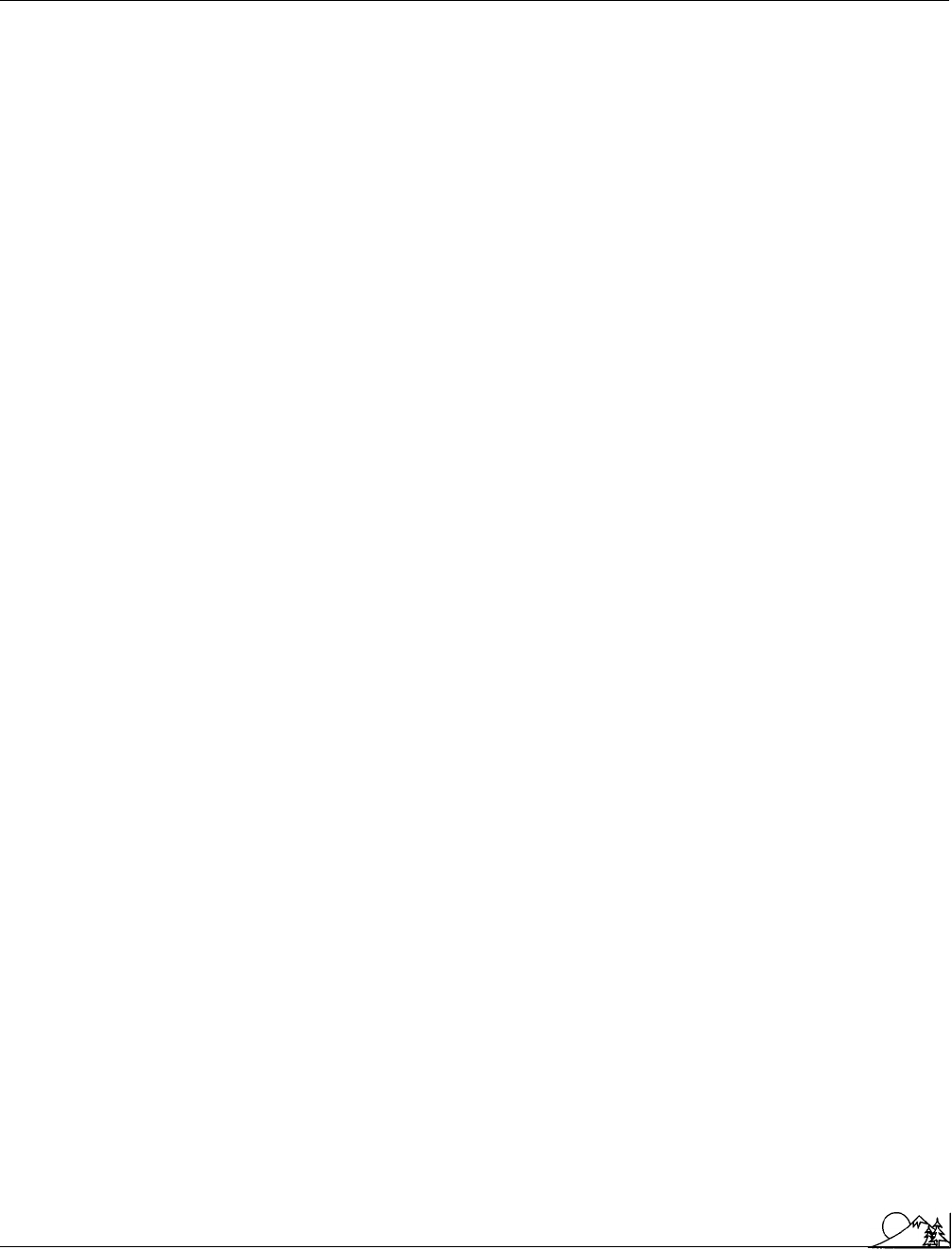
Environmental Encyclopedia 3
Green belt/greenway
Commission also devised standards to evaluate the claims
made by advertisers.
Often, the issue has been whether one product is really
better for the environment than another. For instance, phos-
phate-free detergents created a controversy when they were
introduced in France. Some companies claimed that they
were no more environmentally benign than detergents that
had
phosphates
. Rhone-Poulenc, the French producer of
the detergents with phosphates, ran ads of dead fish appar-
ently killed by the substances in the detergents which did not
have phosphates. Proctor & Gamble launched a campaign
which claimed that
disposable diapers
actually had less
negative environmental impacts than reusable diapers. They
pointed to the detergents, hot water, and energy used in
washing cloth diapers, the energy needed to bring them to
consumers, and the pesticides that were in the cotton out
of which they were made.
Life-cycle assessments came into vogue as companies
argued about the relative environmental merits of various
products. Assessments exam the total environmental impact
of using the product and how it rates—environmentally—
to other similar products. Migros, the large Swiss retailer,
has developed an “eco-balance” or life-cycle program to ana-
lyze the impact of its packaging in terms of the resources
used and how they are disposed of.
Green labeling programs exist in Germany (
Blue
Angel
), Canada (Environmental Choice), and Japan (Eco-
mark). They are run by the governments of these countries,
but the United States government has not been willing to
give this kind of endorsement to commercial products. In-
stead, various environmental groups have
seals
of approval
which they have applied to selected goods that pass their tests
of environmental acceptability. See also Environmentalism;
Green packaging; Green products; Recycling
[Alfred A. Marcus]
R
ESOURCES
B
OOKS
Cairncross, F. Costing the Earth. Boston: Harvard Business School Press,
1992.
Elkington, J., and J. Hailes. The Green Consumer Guide. London: Gol-
lancz, 1988.
Green belt/greenway
A green belt is an area of land that usually surrounds a town
or city, and is kept open by government restrictions on
further development. Often it comprises both public and
private land.
Green belts provide both recreational areas and land-
scape, but their main purpose is to contain cities, diverting
664
future growth, and preventing cities and towns from
merging.
It grew out of Sir Ebenezer Howard’s “Garden City”
approach to town planning, which aimed to provide natural
areas for residents of cities. Garden cities were surrounded
by countryside; city expansion was only to take place by
developing new garden cities on the other side of the green
belt. The result would be clusters of cities grouped around
a central city. Several garden cities (e.g., Welwyn in England)
were built in Britain.
In the 1920s, London’s government called for study
of an “agricultural belt,” although the farming function was
considered incidental. Its key purpose was to act as a barrier
to growth. Ultimately, these were to serve as open spaces.
Sir Raymond Unwin proposed a “green girdle” of spaces
easily accessible to towns and cities. This plan led to the
1938 Green Belt Act, and about 38,000 acres (15,580 ha)
were purchased. After World War II, green belts were again
proposed as a means to limit development. A green belt
about 5 mi deep (8 km) separated the inner city and the
suburbs from the outer countryside. Land was both pur-
chased and controlled through zoning compensation and
by purchasing development rights. Typically, farming was
allowed, but housing was not. By 1959, 840 mi
2
(2,175
km
2
) had been secured. The green belt was not considered
completely successful, as it did not halt London’s growth,
and residents’ use of the lands was not high, as they were
not easily accessible.
Other difficulties, according to William H. Whyte,
author of The Last Landscape, were the time and expense of
controlling land and maintaining it, arbitrary placement of
the green belt areas (not following natural boundaries) and
lack of function attached to the land.
Green belts today emphasize the landscape and recre-
ational values of open areas. Containment is negative and
it does not work, a conclusion the Japanese came to in 1965
when they abandoned a proposed London-type green belt
to contain Tokyo.
The green belt concept came to the United States
much later, and many would say that it grew into the
greenways concept, which have the specific purpose of pro-
viding open space and recreational areas. In the United
States, the term is often used interchangeably with the term
greenway, although the meaning is somewhat different.
Greenways, according to Jennifer Howard, author of
Greenways: A Citizen’s Guide, are linear corridors of land
and water and the natural, cultural, and recreational resources
they link together. They help conserve a variety of resources
and create recreational opportunities.
Greenways were inspired both by green belts and by
the work of landscape architect Frederick Law Olmstead,
who, in the late 1800s, designed a number of urban park

Environmental Encyclopedia 3
Green Cross
systems he called “parkways.” One of his most notable is
the Emerald Necklace, a string of park areas around Boston.
They may take the form of a riverfront walkway, a
bicycle path, an urban walking trail connecting historic sites
and neighborhood parks, a
wildlife migration
corridor,
among others. Greenways are typically categorized as river
greenways, paths and trails, cultural and historic greenways,
wildlife corridors. They are typically comprising both public
and private lands, and can include trails, riverways,
habitat
and resource
conservation
areas, notable natural features,
scenic roads, historic structures, vacant urban lands, for-
estland, and farm fields—basically any resource that is signif-
icant to a community. Greenways help make these resources
accessible to residents without need for a car. Four categories
of land and
water resources
can be incorporated into a
greenway system: resource-conservation areas, parks and
open spaces, cultural and historic resources, and the corridors
of land and water which connect these other elements to-
gether.
In the last 20 years, the greenway concept has increased
in recognition and popularity. Today, hundreds are under-
way. In 1987, The President’s Commission on Americans
Outdoors focused national attention on greenways, and rec-
ommended their establishment “to link together the rural
and urban spaces in the American landscape.”
In Massachusetts, several greenways exist. The Con-
necticut River Greenway State Park in Massachusetts com-
prises about 3,500 acres (14,350 ha) of land owned or con-
trolled by the Department of Environmental Management
along a 70-mi (113-km) stretch of the Connecticut River.
Much of the land is in private ownership and includes farms
and woodlots.
The Massachusetts Bay Circuit encircles the entire
Boston Metropolitan area; within Boston, the Emerald
Necklace, a string of parkways, was planned by Frederick
Law Olmsted. Other notable green belts exist in Portland,
Oregon; Vienna; and Tokyo.
[Carol Steinfeld]
R
ESOURCES
B
OOKS
Howard, J., Creating Greenways: A Citizen’s Guide. The Department of
Environmental Management, 1997.
Whyte, W. H. The Last Landscape. New York: Doubleday & Company,
1968.
Green consumerism
see
Green advertising and marketing;
Green Cross; Green products
665
Green Cross
Long used by several organizations, the Green Cross has
become a symbol of environmental awareness and responsi-
bility.
A religiously oriented group officially called the Amer-
ican Association of the Green Cross is based in Colorado
Springs, Colorado, and describes itself as “a new Christian
environmental organization whose purpose is to address the
ethical and moral issues underlying ecological issues, and to
mobilize volunteers in service to Creation.” The group’s
motto is “serving and keeping Creation,” and it encourages
such activities as “the development of every church as a
Creation-awareness center, education about Christian re-
sponsibility for the earth, local action to address ecological
issues.” The group also promotes tree planting, urban gar-
dening,
habitat
restoration, resource
conservation
, and
waste reduction
. It is associated with the North American
Conference on Christianity and Ecology, and it plans to
establish a network of chapters in churches, schools, youth
groups, and colleges.
The International Green Cross and Green Crescent
is a new environmental group formed in April 1993 and
headed by former Soviet President Mikhail S. Gorbachev.
Hoping to do for the
environment
what the Red Cross and
Red Crescent have done for disaster relief, the International
Green Cross will work to coordinate environmental efforts
on a global scale. Mr. Gorbachev has said that he accepted
leadership of the group because “I am convinced that saving
the environment is the number one priority for all countries.”
Sponsors of the organization include an array of distin-
guished world political and spiritual leaders, including India’s
Mother Teresa and Javier Perez de Cuellar, the former Secre-
tary General of the United Nations.
The Green Cross Certification Company is the former
name of a non-profit group that awarded certifications to
manufacturers whose products met certain limited environ-
mental standards. The certification program is now adminis-
tered by Scientific Certification Systems, Inc. (SCS), a pri-
vate, for-profit laboratory that charges manufacturers a fee
to research products and to verify their performance and
claims. SCS says that it is “committed to developing pro-
grams that motivate private industry to work toward an
environmentally sustainable future” by “conducting indepen-
dent, unbiased evaluations of products and product claims,
and recognizing products achieving exceptional environmen-
tal performance goals.” The SCS Environmental Report
Card summarizes the environmental performance of a prod-
uct, including the amount of “environmental burden” associ-
ated with the product and its packaging.
SCS emphasizes that it does not approve products as
“green” or environmentally acceptable, but rather verifies
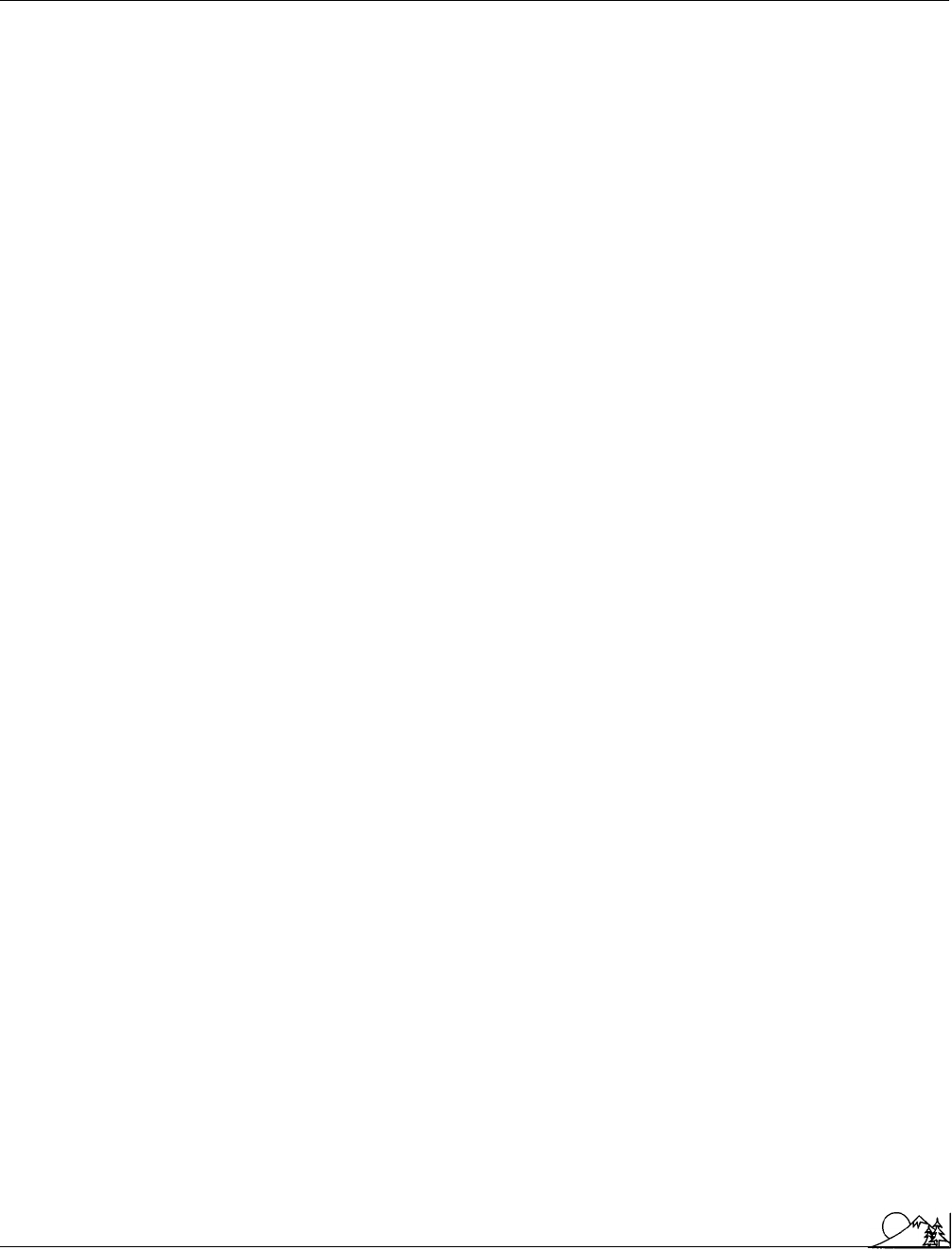
Environmental Encyclopedia 3
Green packaging
the environmental claims that companies make for their
products and analyses their environmental impact. SCS tries
to evaluate a product’s life cycle program, the impact it has
from manufacture to disposal. Factors considered usually
include the toxic waste generated and the energy used in
production, the recycled content of the product, and its
recyclability or biodegradability upon disposal. Different
product categories have varying standards of acceptability
depending on the state of technology for the above factors
for the particular product or industry. See also Environmental
consumers; Environmental ethics; Green advertising and
marketing; Green products; Nongovernmental organization
[Lewis G. Regenstein]
Green packaging
Packaging is the largest form of domestic
garbage
. In 1999
it amounted to 33.1% of
solid waste
as measured by weight
in the United States. Significant waste prevention implies
reductions in packaging. There simply is not enough room
in landfills or incinerators for all the excess packaging the
industry produces.
People value products not only for their content but
also for the packaging. It gives products a better feel and a
more attractive appearance and suggests less of a risk of
contamination. It prolongs the life of the product and allows
people to make fewer trips to the supermarket.
For purely economic reasons most packages are be-
coming lighter.
Aluminum
cans, for instance, are 45%
lighter today than they once were. Shrink wrap film and a
plastic base are increasingly taking the place of corrugated
boxes. Some companies are trying to eliminate packaging
entirely. Outer boxes were once thought to be absolutely
essential for the sale of toothpaste, but the giant Swiss re-
tailer, Migros, discovered that consumers ultimately became
accustomed to unboxed tubes and that sales did not suffer
as a result. McDonald’s and other fast food restaurants in
the United States have stopped using
polystyrene
boxes to
package their sandwiches, turning instead to paper wraps.
Other innovations in packaging are also occurring. For in-
stance, Procter & Gamble is no longer using metal-based
inks for printing on packages. See also Container deposit
legislation; Green advertising and marketing; Waste re-
duction
[Alfred A. Marcus]
R
ESOURCES
B
OOKS
Cairncross, F. Costing the Earth. Boston: Harvard Business School Press,
1992.
666
Green plans
Green plans are comprehensive environmental strategies that
are intended to improve environmental quality and make
rapid progress towards sustainability. (In its use here, the
word “green” is non-political and non-ideological, and
merely refers to a context of environmental protection and
sustainable development.) Green plans are characterized by
a longer-term view, while being thorough in their consider-
ation and integration of environmental issues. Green plans
also take account of economic realities, while consistently
ensuring an appropriate degree of protection of environmen-
tal quality and natural ecological values (such as the needs
of
endangered species
and rare ecosystems).
Green plans represent an extremely important tool for
the longer-term protection of environmental quality,
con-
servation
of
natural resources
and ecological values, and
achievement of a sustainable economic system. Green plans
do this by proposing sustainable alternatives to the many
kinds of modern activities that are causing damages to the
environment
and
biosphere
. Green plans attempt to inte-
grate the economic, scientific, and political interests of soci-
ety to develop a strategy that can achieve a sustainable pros-
perity for present and
future generations
of humans and
their economic systems, while also supporting other
species
and natural ecosystems.
Green plans are designed to replace more conventional
methods for protecting the environment. These conventional
methods include the following:
(1) Sectoral structures of government and administration.
This type of structure can be a problem because there is
often a lack of integration among sectors, even though there
may be important environmental linkages. For example, en-
vironmental management by government typically involves
separate agencies responsible for
air pollution
,
water pollu-
tion
, forestry, agriculture, fisheries, metal resources, fossil-
fuel resources, industrial development, human health,
bio-
diversity
(i.e., the conservation of indigenous species and
ecosystems), and other environment-related mandates. Be-
cause the responsibilities of these agencies are not well inte-
grated, they often work at cross-purposes. For instance,
agencies responsible for managing harvests of timber may
not take adequate consideration of the interests of agencies
concerned with
pollution
, endangered species, or rare eco-
systems (such as old-growth forests). This commonly results
in environmental and ecological damages being caused by
timber harvesting, with attendant controversies.
(2) Single-issue policies. Single-issue policies may result
from the actions of special-interest groups, which are seeking
to advance their particular environmental, ideological, or
socio-economic agendas. This can, however, result in poor
integration among issues, and divisive political and social
